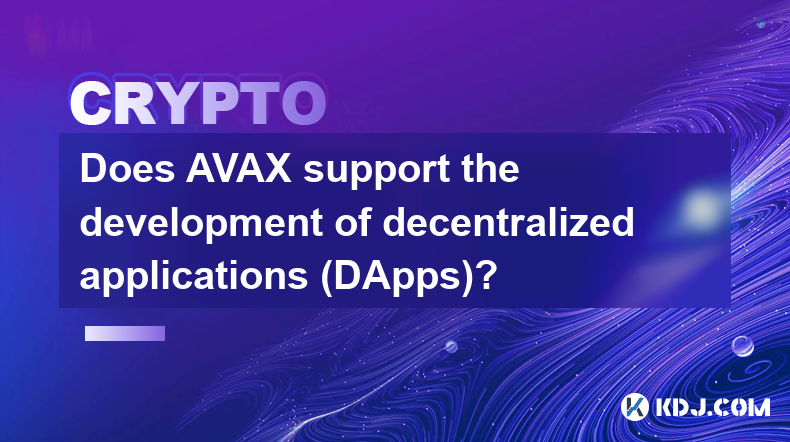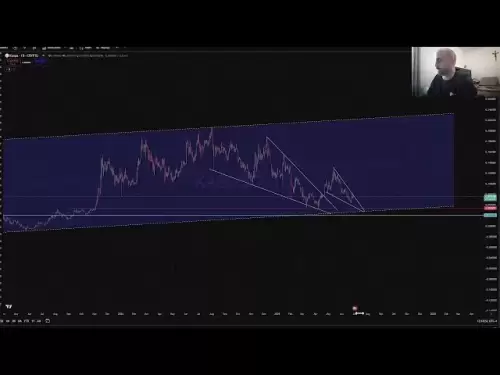-
 Bitcoin
Bitcoin $107,341.7259
0.15% -
 Ethereum
Ethereum $2,438.6204
0.70% -
 Tether USDt
Tether USDt $1.0003
-0.02% -
 XRP
XRP $2.1866
1.94% -
 BNB
BNB $649.0952
0.36% -
 Solana
Solana $150.9602
5.63% -
 USDC
USDC $0.9999
0.00% -
 TRON
TRON $0.2742
0.40% -
 Dogecoin
Dogecoin $0.1645
1.93% -
 Cardano
Cardano $0.5669
1.18% -
 Hyperliquid
Hyperliquid $37.8286
4.19% -
 Bitcoin Cash
Bitcoin Cash $491.4669
-2.74% -
 Sui
Sui $2.8150
3.06% -
 Chainlink
Chainlink $13.4184
2.91% -
 UNUS SED LEO
UNUS SED LEO $9.0809
0.27% -
 Avalanche
Avalanche $18.0295
2.60% -
 Stellar
Stellar $0.2396
1.19% -
 Toncoin
Toncoin $2.8587
0.13% -
 Shiba Inu
Shiba Inu $0.0...01160
2.59% -
 Litecoin
Litecoin $86.4192
1.45% -
 Hedera
Hedera $0.1486
1.19% -
 Monero
Monero $308.4324
0.87% -
 Polkadot
Polkadot $3.4202
1.43% -
 Bitget Token
Bitget Token $4.6436
-0.34% -
 Dai
Dai $0.9998
-0.02% -
 Ethena USDe
Ethena USDe $1.0002
0.00% -
 Uniswap
Uniswap $7.1527
3.29% -
 Pi
Pi $0.5357
-8.45% -
 Pepe
Pepe $0.0...09588
4.61% -
 Aave
Aave $259.9759
0.81%
Does AVAX support the development of decentralized applications (DApps)?
Avalanche (AVAX) empowers dApp development with its customizable subnets, robust tooling, supportive community, and interoperability features, fostering a thriving ecosystem for diverse decentralized applications.
Mar 11, 2025 at 04:51 pm

Key Points:
- Avalanche (AVAX) explicitly supports the development of decentralized applications (dApps).
- It offers multiple subnets allowing for customized dApp deployment and scaling.
- AVAX provides robust tooling and resources to aid developers throughout the dApp lifecycle.
- The Avalanche ecosystem boasts a growing community of developers actively building dApps.
- Interoperability features facilitate seamless communication between different dApps.
Does AVAX Support the Development of Decentralized Applications (DApps)?
Yes, Avalanche (AVAX) robustly supports the development of decentralized applications (dApps). Its architecture is specifically designed to facilitate the creation and deployment of various dApps, catering to diverse needs and scalability requirements. Unlike some blockchains that struggle with congestion and high transaction fees, Avalanche's unique consensus mechanism addresses these challenges effectively, making it an attractive platform for dApp development.
The Avalanche platform distinguishes itself through its innovative subnet architecture. Subnets are essentially customizable blockchains built on top of the Avalanche network. This allows developers to tailor the environment to their specific dApp needs, choosing parameters like transaction speed, consensus mechanism, and security level. This flexibility is a major draw for developers seeking optimal performance and control.
For developers, Avalanche offers a comprehensive suite of tools and resources. The Avalanche documentation provides detailed guides and tutorials on various aspects of dApp development, from smart contract creation to deployment and management. Furthermore, the vibrant Avalanche community actively supports developers through forums, online communities, and hackathons. This collaborative environment fosters innovation and problem-solving.
The Avalanche ecosystem is experiencing a surge in dApp development. A growing number of projects are leveraging the platform's capabilities to build innovative and scalable dApps across various sectors, including DeFi, gaming, and NFTs. This demonstrates the platform's practical applicability and its appeal to developers.
One key aspect of Avalanche's dApp support is its strong emphasis on interoperability. This means that dApps built on Avalanche can seamlessly interact with other blockchains and protocols, expanding their reach and potential. This interoperability fosters collaboration and avoids the siloed nature of some blockchain ecosystems. This interconnectivity is crucial for the future of decentralized applications.
Avalanche’s support for multiple programming languages further enhances its appeal to developers. The platform supports Solidity, a language widely used for Ethereum-based dApps, making it easier for existing developers to transition to the Avalanche ecosystem. This lowers the barrier to entry and encourages wider adoption. The availability of other languages also broadens the developer pool and promotes diverse approaches to dApp development.
The Avalanche Foundation actively supports the development of the Avalanche ecosystem through grants, investments, and collaborations. This commitment demonstrates a long-term vision for the platform and its ability to foster growth within the dApp space. This sustained support is crucial for attracting and retaining talented developers.
Security is paramount in the blockchain world, and Avalanche addresses this concern through its rigorous security protocols. The platform employs a novel consensus mechanism that ensures high transaction throughput while maintaining a secure and reliable network. This security is vital for maintaining user trust and confidence in the dApps built on the platform. Robust security is essential for widespread adoption.
Developing a dApp on Avalanche generally involves several steps:
- Choose a Subnet: Select the appropriate subnet based on your dApp's requirements.
- Develop Smart Contracts: Write the smart contracts using a supported programming language (e.g., Solidity).
- Test Thoroughly: Rigorously test your smart contracts to identify and resolve any bugs or vulnerabilities.
- Deploy Your DApp: Deploy your dApp to the chosen subnet.
- Monitor and Maintain: Continuously monitor and maintain your dApp's performance and security.
Beyond the technical aspects, Avalanche fosters a supportive community. Developers can connect with others, share knowledge, and receive assistance through various channels. This collaborative spirit encourages innovation and speeds up the development process. This community support is invaluable for developers of all levels.
Frequently Asked Questions:
Q: What programming languages are supported for dApp development on Avalanche?
A: Avalanche supports several languages, including Solidity (commonly used for Ethereum dApps), making it accessible to a large pool of developers. Other languages are also supported, broadening development options.
Q: How does Avalanche handle scalability for dApps?
A: Avalanche's subnet architecture allows for customized scaling solutions, enabling dApps to achieve high transaction throughput and low latency tailored to their specific needs.
Q: What are the security measures in place for dApps on Avalanche?
A: Avalanche employs a robust consensus mechanism and rigorous security protocols to protect dApps from various threats, ensuring a secure and reliable platform.
Q: What resources are available for developers building dApps on Avalanche?
A: Avalanche provides comprehensive documentation, tutorials, a supportive community, and dedicated developer resources to aid in the development lifecycle.
Q: Are there any costs associated with deploying a dApp on Avalanche?
A: The costs associated with deploying a dApp on Avalanche depend on factors such as subnet choice, transaction fees, and the computational resources used. Specific costs should be researched based on individual needs.
Q: How does Avalanche ensure interoperability between its dApps and other blockchains?
A: Avalanche's design emphasizes interoperability, allowing dApps to interact seamlessly with other networks through various bridging technologies and protocols.
Disclaimer:info@kdj.com
The information provided is not trading advice. kdj.com does not assume any responsibility for any investments made based on the information provided in this article. Cryptocurrencies are highly volatile and it is highly recommended that you invest with caution after thorough research!
If you believe that the content used on this website infringes your copyright, please contact us immediately (info@kdj.com) and we will delete it promptly.
- XRP, Ripple, and Bitcoin: Decoding the Latest Crypto Moves
- 2025-06-29 08:30:13
- NBA Legend Scottie Pippen's Crypto Picks: SHIB and XRP in the Spotlight
- 2025-06-29 08:50:12
- Bitcoin, US Strategy, and Cryptocurrency Regulation: Navigating the Digital Frontier
- 2025-06-29 09:10:13
- Chainlink's $17 Breakout: Bullish Momentum Fueled by Mastercard Partnership
- 2025-06-29 08:30:13
- Crypto Launches Q3 2025: Top Picks to Watch
- 2025-06-29 09:10:13
- Gemini AI's 2025 Crypto Forecast: Altcoin Boom Ahead?
- 2025-06-29 08:52:14
Related knowledge

How to customize USDT TRC20 mining fees? Flexible adjustment tutorial
Jun 13,2025 at 01:42am
Understanding USDT TRC20 Mining FeesMining fees on the TRON (TRC20) network are essential for processing transactions. Unlike Bitcoin or Ethereum, where miners directly validate transactions, TRON uses a delegated proof-of-stake (DPoS) mechanism. However, users still need to pay bandwidth and energy fees, which are collectively referred to as 'mining fe...

USDT TRC20 transaction is stuck? Solution summary
Jun 14,2025 at 11:15pm
Understanding USDT TRC20 TransactionsWhen users mention that a USDT TRC20 transaction is stuck, they typically refer to a situation where the transfer of Tether (USDT) on the TRON blockchain has not been confirmed for an extended period. This issue may arise due to various reasons such as network congestion, insufficient transaction fees, or wallet-rela...

How to cancel USDT TRC20 unconfirmed transactions? Operation guide
Jun 13,2025 at 11:01pm
Understanding USDT TRC20 Unconfirmed TransactionsWhen dealing with USDT TRC20 transactions, it’s crucial to understand what an unconfirmed transaction means. An unconfirmed transaction is one that has been broadcasted to the blockchain network but hasn’t yet been included in a block. This typically occurs due to low transaction fees or network congestio...

How to check USDT TRC20 balance? Introduction to multiple query methods
Jun 21,2025 at 02:42am
Understanding USDT TRC20 and Its ImportanceUSDT (Tether) is one of the most widely used stablecoins in the cryptocurrency market. It exists on multiple blockchain networks, including TRC20, which operates on the Tron (TRX) network. Checking your USDT TRC20 balance accurately is crucial for users who hold or transact with this asset. Whether you're sendi...

What to do if USDT TRC20 transfers are congested? Speed up trading skills
Jun 13,2025 at 09:56am
Understanding USDT TRC20 Transfer CongestionWhen transferring USDT TRC20, users may occasionally experience delays or congestion. This typically occurs due to network overload on the TRON blockchain, which hosts the TRC20 version of Tether. Unlike the ERC20 variant (which runs on Ethereum), TRC20 transactions are generally faster and cheaper, but during...

The relationship between USDT TRC20 and TRON chain: technical background analysis
Jun 12,2025 at 01:28pm
What is USDT TRC20?USDT TRC20 refers to the Tether (USDT) token issued on the TRON blockchain using the TRC-20 standard. Unlike the more commonly known ERC-20 version of USDT (which runs on Ethereum), the TRC-20 variant leverages the TRON network's infrastructure for faster and cheaper transactions. The emergence of this version came as part of Tether’s...

How to customize USDT TRC20 mining fees? Flexible adjustment tutorial
Jun 13,2025 at 01:42am
Understanding USDT TRC20 Mining FeesMining fees on the TRON (TRC20) network are essential for processing transactions. Unlike Bitcoin or Ethereum, where miners directly validate transactions, TRON uses a delegated proof-of-stake (DPoS) mechanism. However, users still need to pay bandwidth and energy fees, which are collectively referred to as 'mining fe...

USDT TRC20 transaction is stuck? Solution summary
Jun 14,2025 at 11:15pm
Understanding USDT TRC20 TransactionsWhen users mention that a USDT TRC20 transaction is stuck, they typically refer to a situation where the transfer of Tether (USDT) on the TRON blockchain has not been confirmed for an extended period. This issue may arise due to various reasons such as network congestion, insufficient transaction fees, or wallet-rela...

How to cancel USDT TRC20 unconfirmed transactions? Operation guide
Jun 13,2025 at 11:01pm
Understanding USDT TRC20 Unconfirmed TransactionsWhen dealing with USDT TRC20 transactions, it’s crucial to understand what an unconfirmed transaction means. An unconfirmed transaction is one that has been broadcasted to the blockchain network but hasn’t yet been included in a block. This typically occurs due to low transaction fees or network congestio...

How to check USDT TRC20 balance? Introduction to multiple query methods
Jun 21,2025 at 02:42am
Understanding USDT TRC20 and Its ImportanceUSDT (Tether) is one of the most widely used stablecoins in the cryptocurrency market. It exists on multiple blockchain networks, including TRC20, which operates on the Tron (TRX) network. Checking your USDT TRC20 balance accurately is crucial for users who hold or transact with this asset. Whether you're sendi...

What to do if USDT TRC20 transfers are congested? Speed up trading skills
Jun 13,2025 at 09:56am
Understanding USDT TRC20 Transfer CongestionWhen transferring USDT TRC20, users may occasionally experience delays or congestion. This typically occurs due to network overload on the TRON blockchain, which hosts the TRC20 version of Tether. Unlike the ERC20 variant (which runs on Ethereum), TRC20 transactions are generally faster and cheaper, but during...

The relationship between USDT TRC20 and TRON chain: technical background analysis
Jun 12,2025 at 01:28pm
What is USDT TRC20?USDT TRC20 refers to the Tether (USDT) token issued on the TRON blockchain using the TRC-20 standard. Unlike the more commonly known ERC-20 version of USDT (which runs on Ethereum), the TRC-20 variant leverages the TRON network's infrastructure for faster and cheaper transactions. The emergence of this version came as part of Tether’s...
See all articles

























































































